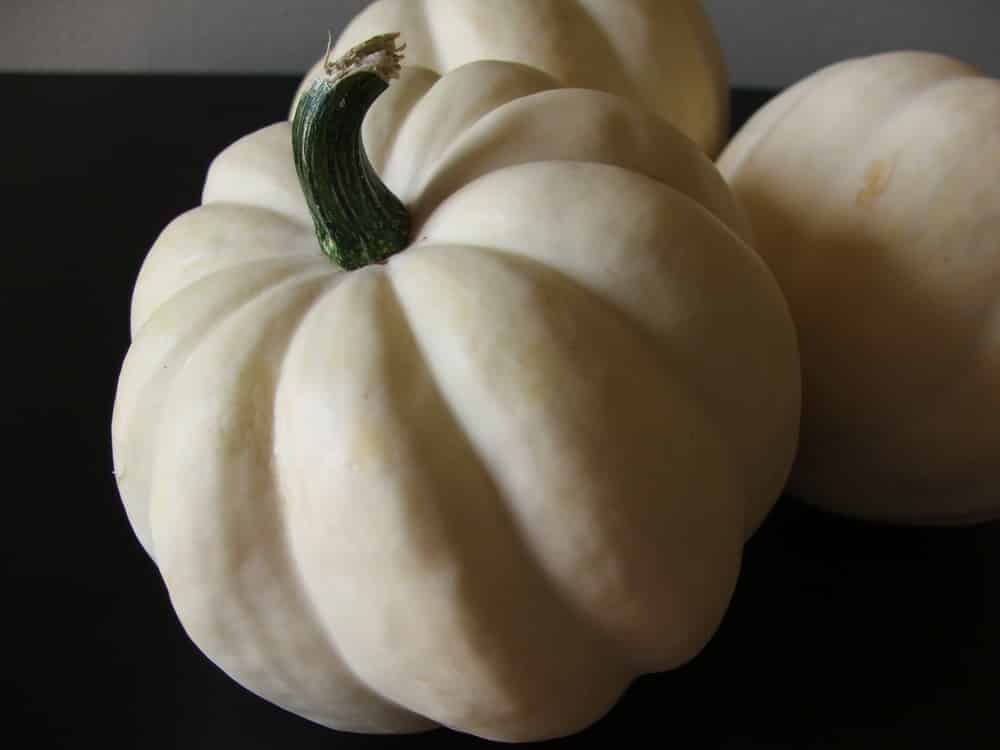
If you are aware that adding vegetables to the diet is healthy, you must be looking for some delicious vegetables during the winter, and what can be better than acorn squash? Acorn squash is one of the most common vegetables available in different colors. So, with this article, we are talking about white acorn squash vs. green acorn squash.
Acorn Squash – What Is It?
Acorn squash is a winter squash that looks like an acorn and ranges from six inches to ten inches in length. It is available in white, tan, dark green, and gold colors, but the dark green squash remains the most popular with ridged skin and orange to yellow flesh. However, all of them have similar flavor profiles, especially when baked. Also, acorn squash tastes amazing when topped with butter, honey, and brown sugar because it takes out the nutty and sweet flavor. Now, let’s check out more about the green and white squash!
White Acorn Squash vs Green
White Acorn Squash
White acorn squash is known for its small to medium size and ranges from 12cm to 20cm in length. For the most part, this acorn squash will have an ovoid shape and has deep and furrowed ridges that elongate to the stem’s end. White acorn squash has semi-thin, smooth, and firm skin, while the flesh ranges from creamy white color to pale yellow color. In addition, the flesh is moist and spongy while the center remains hollow.
The flesh part also has the string-based pulp, and you will see flat yet small seeds in cream color. When cooked, the white acorn squash will have a tender and smooth texture with a sweet and mild flavor. What we love about white acorn squash is that it tastes amazing when cooked and boasts the undertones of black pepper and hazelnut. Also, since it is the winter squash, it is readily available during the fall and winter seasons.
White acorn squash is closely related to zucchini and pumpkins and is also called pepper squash. The best thing about white acorn squash is that it has a tender texture and can be easily stored for longer time periods. As for the application, it can be used for a variety of recipes, and surprisingly, it can be used for savory as well as sweet recipes. The white acorn squash also has a great nutritional profile since it has dietary fiber, vitamin C, potassium, thiamine, magnesium, and vitamin B6.
It is a suitable addition to recipes that call for grilling, broiling, baking, and roasting. The cooked form of this squash is suitable for curries, stews, risotto, soup, pies, and cakes. In addition, it makes a delicious side dish, and the flavor can be enhanced with cinnamon, maple syrup, apple, citrus, fresh herbs, dried berries, sausages, and bacon. Also, if uncut, it can be stored for over a month!
Green Acorn Squash
Green acorn squash is known for its medium or small size, and it has an ovoid shape, just like the white acorn squash. It has deep yet furrowed ridges that are tapered to the opposite end of the stem end. When it comes down to appearance, it has a light green rind or skin, especially when it is young and will turn to deep green color.
Upon maturing, the green acorn squash achieves the orange and yellow patches. It has the most spongy flesh, while the central part is hollow. There are cream-colored, small, and flat seeds. Also, cooking changes the overall consistency because it comes tender, and the flavor will be nutty and sweet (the texture might be dry as well).
The surprising fact about green acorn squash is that it is available all around the year, but the best ones are available during fall and winter because these are the peak seasons. On top of everything, green acorn squash is related to gourds and pumpkins. It can be added to different food items, including appetizers, desserts, main entrees, and side dishes.
In addition, it has potassium, manganese, vitamin B6, vitamin C, dietary fiber, and magnesium. If cooked, green acorn squash’s skin becomes edible and is a great addition to pasta, stews, meat, soup, curries, and risotto. Furthermore, it is suitable for sweet recipes, including pies, cakes, and quick bread. All in all, it tastes well with balsamic vinegar, mushrooms, maple syrup, rosemary, thyme, brown sugar, cilantro, cheese, pecans, and more!